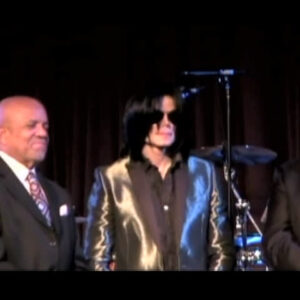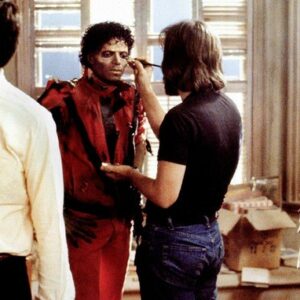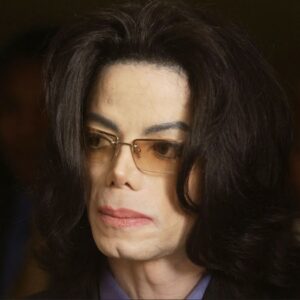In the pantheon of R&B and soul music, few names command the reverence of Mary J. Blige. Often referred to as the “Queen of Hip-Hop Soul,” Blige’s fusion of raw, emotional depth with streetwise beats redefined the genre and left an indelible mark on the music industry. Her story is a testament to the enduring power of vulnerability, authenticity, and artistic innovation. To understand her legacy, we must first explore the broader context of the 90s R&B era—a decade defined by smooth melodies, lyrical complexity, and an ever-evolving fusion of genres.
The Rise of 90s R&B: A Musical Renaissance
The 1990s were a transformative time for R&B, marked by the rise of new voices and sounds that blended soul with elements of hip-hop, funk, and pop. Artists like Whitney Houston, TLC, Boyz II Men, and Aaliyah ruled the charts, shaping the musical landscape and setting the stage for a generation of performers. The era was notable for its ability to balance heartfelt ballads with upbeat, danceable tracks, providing a soundtrack for a generation dealing with the complexities of love, heartbreak, and self-discovery.
This was also a time when R&B became deeply intertwined with hip-hop. The smooth, polished sound of 80s R&B began to give way to grittier, more emotionally charged music that mirrored the realities of urban life. Artists like Jodeci and SWV, who drew heavily on both R&B and hip-hop influences, brought a new kind of edge to the genre. It was within this environment that Mary J. Blige would emerge, offering a voice that was both tender and fierce, grounded in the real-life struggles of love, loss, and survival.
Blige’s Musical Roots and Early Influences
Mary J. Blige grew up in the projects of Yonkers, New York, where her exposure to music was shaped by both her environment and the sounds of the time. Her early influences were a mix of classic soul, contemporary R&B, and hip-hop. Blige’s appreciation for artists like Aretha Franklin, Chaka Khan, and Anita Baker is well documented, but it was the blend of these classic influences with newer, more street-oriented sounds that would define her career.
Artists like New Edition, Jodeci, and SWV were among the key figures in 90s R&B who left a lasting impression on Blige. New Edition’s polished harmonies and Jodeci’s rough-edged, sensual ballads provided a template for blending hip-hop attitude with R&B vocals. SWV (Sisters With Voices), with their smooth harmonies and relatable lyrics, further illustrated how R&B could speak directly to the heart of everyday experiences. Blige absorbed all of these influences, but she also took it a step further by adding her own gritty authenticity.
The magic of Blige’s sound lies in the juxtaposition of her soulful, gospel-inflected vocals with the hard-hitting beats of hip-hop. From the outset, Blige made it clear that her music would not be about the perfect love stories that populated much of mainstream R&B. Instead, she sang about heartbreak, personal demons, and survival in a way that was both deeply personal and universally relatable.
The Birth of Hip-Hop Soul
In 1992, Blige released her debut album, What’s the 411?, and with it, she would redefine the genre. Often credited as the first album to fully embrace the “hip-hop soul” sound, What’s the 411? was a revolutionary blend of hip-hop production and R&B vocals. Produced by a young Sean “Puff Daddy” Combs (now Diddy), the album featured tracks that combined the swagger of hip-hop with the emotional resonance of soul. Blige’s voice, powerful and filled with raw emotion, soared over beats that could have easily been at home on a hip-hop record.
Tracks like “Real Love” and “You Remind Me” exemplify this new sound. “Real Love” is a standout for its infectious beat, which samples Audio Two’s “Top Billin’,” paired with Blige’s plea for genuine affection. The song became an anthem for women navigating the complexities of romantic relationships in the modern world. “You Remind Me,” another hit from the album, similarly fuses hip-hop beats with Blige’s introspective lyrics, creating a sound that was both fresh and instantly relatable.
Blige’s collaboration with Puff Daddy was crucial in shaping her sound. He understood how to marry the rhythmic drive of hip-hop with the melodic richness of R&B, and together, they crafted a sound that would go on to influence a generation of artists. Puff Daddy’s production, with its use of samples from classic soul records and his insistence on keeping the beats raw, helped define the aesthetic of the hip-hop soul genre.
Lyricism and Emotional Depth
What truly set Blige apart from her contemporaries was the emotional depth of her lyrics. While many R&B singers of the time were content to sing about love in abstract or idealized terms, Blige’s songs were marked by a raw honesty that spoke directly to the pain and struggles of her listeners. Themes of love, heartbreak, and personal struggle were ever-present in her work, and it was this vulnerability that endeared her to fans.
Blige’s ability to channel her own experiences into her music is one of her greatest strengths as an artist. In songs like “My Life,” she delves into themes of depression, addiction, and the search for self-worth, all while maintaining a sense of hope and resilience. The title track from her second album, My Life, is a haunting meditation on the pain of living with emotional trauma. The lyrics, “If you looked in my life and see what I’ve seen,” speak to a sense of shared experience with her listeners, many of whom were dealing with similar struggles.
Her song “Not Gon’ Cry,” from the Waiting to Exhale soundtrack, became a powerful anthem for women dealing with heartbreak and betrayal. Blige’s delivery is searing, capturing both the vulnerability and strength of a woman scorned. In this and so many other songs, Blige’s voice acts as a conduit for the emotions that so many women, particularly Black women, were experiencing but rarely saw reflected in mainstream music.
Fashion and Style: The Cultural Significance of 90s R&B
In addition to her musical contributions, Mary J. Blige was also a style icon. The 90s were a time when fashion and music were inextricably linked, and Blige’s style was as influential as her sound. Her signature look—baggy jeans, combat boots, oversized sunglasses, and fur coats—became a symbol of the fusion of street culture with high fashion. This blend of masculine and feminine aesthetics was a hallmark of 90s R&B fashion, where artists like TLC and Aaliyah similarly played with gender norms in their clothing choices.
Blige’s fashion sense was a reflection of the authenticity that defined her music. She wasn’t interested in conforming to the polished, hyper-feminine image that was often expected of female R&B singers. Instead, she embraced a look that was unapologetically urban and tough, yet still glamorous in its own way. As her career progressed, Blige’s style evolved, but she always maintained a sense of individuality and authenticity.
The influence of 90s R&B on fashion extended beyond the music industry. The rise of streetwear, with its oversized silhouettes and bold logos, was directly tied to the cultural prominence of hip-hop and R&B. Blige, along with other artists of the time, helped to popularize this style, which continues to be a major influence in fashion today.
Legacy and Lasting Impact
Mary J. Blige’s impact on music and culture is undeniable. As the pioneer of hip-hop soul, she helped to create a new genre that would go on to influence countless artists. Her willingness to be vulnerable and honest in her music paved the way for future R&B singers like Beyoncé, Alicia Keys, and Jazmine Sullivan, who similarly blend emotional depth with powerful vocals.
Blige’s influence can also be seen in the work of modern R&B artists like SZA, H.E.R., and Summer Walker, who continue to explore themes of love, heartbreak, and personal growth in their music. These artists owe a debt to Blige for breaking down barriers and showing that R&B could be both deeply personal and commercially successful.
In a career that has spanned over three decades, Blige has remained relevant by continuing to evolve as an artist. Her music has grown alongside her, reflecting her personal journey and the changing times. But no matter how much she evolves, the essence of Mary J. Blige—the emotional honesty, the soulful voice, and the streetwise sensibility—remains at the core of her work.
Blige’s contributions to 90s R&B were not just musical but cultural. She gave voice to the experiences of a generation of women who were navigating love, loss, and self-discovery in a rapidly changing world. Through her music, her style, and her resilience, Mary J. Blige became more than just an artist—she became a symbol of strength and survival. Today, her legacy lives on in the music of the artists she inspired and in the hearts of the fans who have been moved by her songs.





